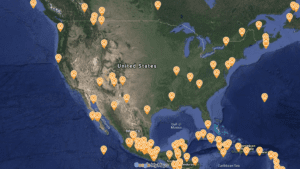Every year UNESCO’s World Heritage Committee meets to decide which locations around the world merit the honor of being a World Heritage Site. This designation is an important landmark for these destinations. It declares them unique treasures of international value, a globally important specimen of cultural or natural heritage. This year the committee met in Baku, Azerbaijan and added a whopping 29 new sites. That brings the total number of World Heritage Sites to 1,121. Discover the new sites and what makes them so unique.
Cultural sites added to the list
Ancient Ferrous Metallurgy Sites of Burkina Faso, Africa

Fifteen ancient and still-standing natural-draught furnaces located in different provinces in the country, are a fascinating journey back to the dawning of the age of industrialism. Different parts of the property – Tiwêga, Yamané, Kindibo and Békuy – show you the increase of iron production centuries later. The oldest evidence of iron development and production located in Douroula, Burkina Faso, dates back to the 8th century BCE. The practice of obtaining iron from ore is no longer used, but the village blacksmiths here still supply the tools and take part in various rituals.
Archaeological Ruins of Liangzhu City, China

Tucked into the south-eastern coast are the mysterious ancient ruins of Late Neolithic China. They reveal an early regional state where the residents held a unified belief system based on rice cultivation. Composed of four areas – the Yaoshan Site, the High-dam at the Mouth of the Valley, the Low-dam on the Plain and the City Site – they are an outstanding example of urban planning. The civilization is expressed in earthen monuments, a water conservation system and a social hierarchy expressed in separated burials in cemeteries inside the property. The site is located between the villages of Liangzhu and Pingyao in the northwestern part of Hangzhou, about a day’s drive from Shanghai.
Babylon, Iraq
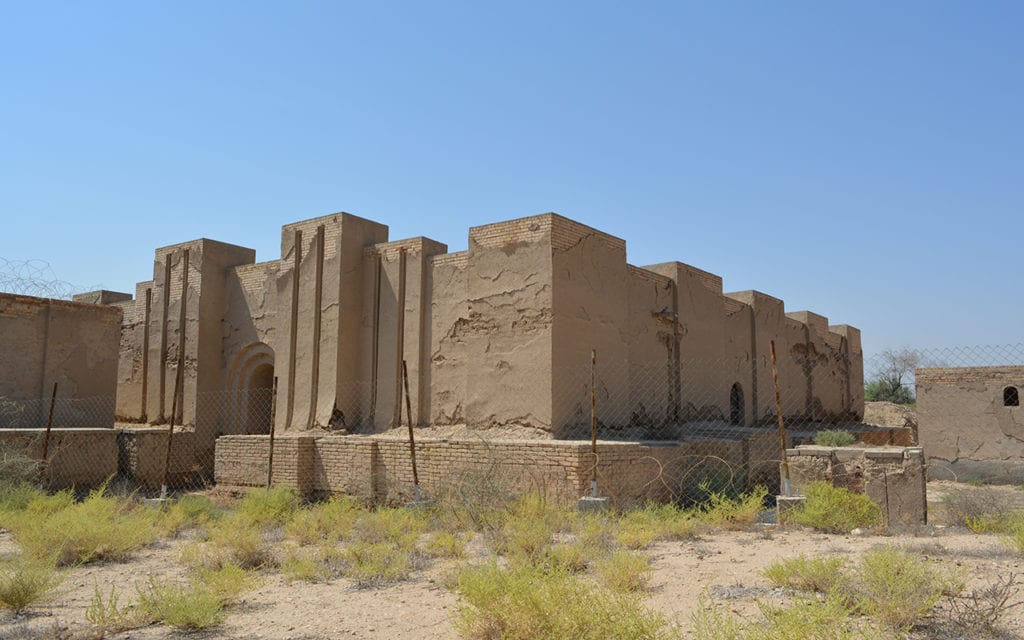
Explore these famous ruins, which between 626 and 539 BCE, was the capital of the Neo-Babylonian Empire. You will see villages and agricultural areas, but most importantly, you will see its ancient remains. The city walls, gates, palaces and temples are a testimony to one of the most influential empires in history. It is often associated with the Hanging Gardens – one of the Seven Wonders of the World – and inspired artistic and religious culture the world over. Babylon is 85 km south of Baghdad, and makes the perfect day trip from the city.
Bagan, Myanmar
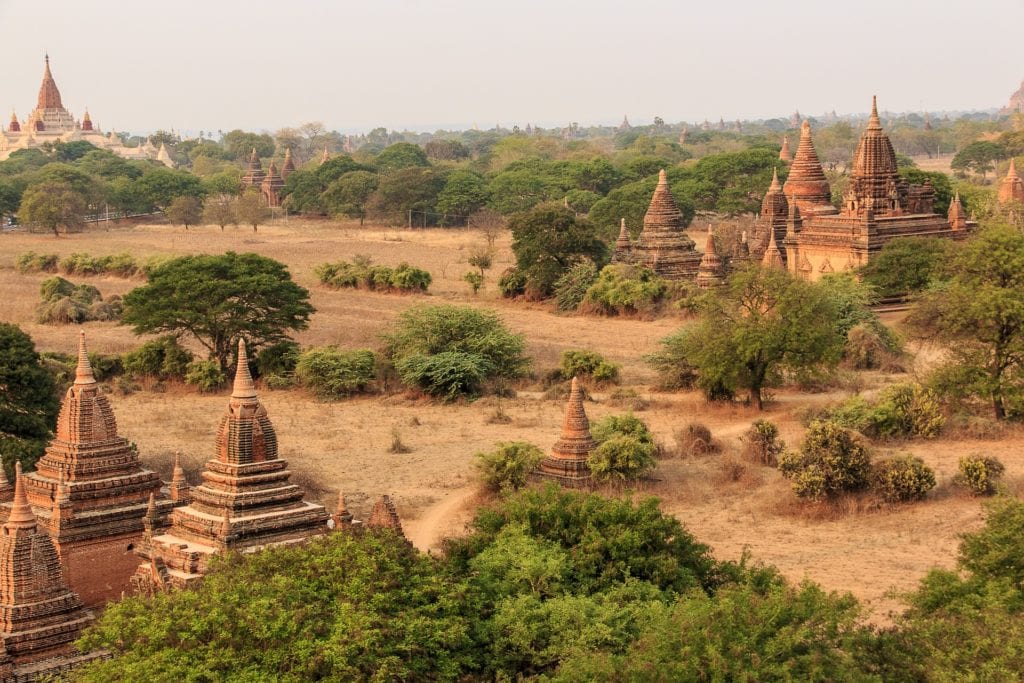
A sacred landscape awaits you on an unassuming bend of the Ayeyarwady River, in the central plain of Myanmar. It is a sacred landscape, with an exceptional range of Buddhist art and architecture. Eight components, including temples, stupas, monasteries, archaeological remains, frescoes and sculpture all entice and enthrall. The peak of the Bagan civilization was between the 11th and 13th centuries CE, and bears testimony to the strength of religious devotion of the early Buddhist empire. Bagan is about a 4-hour drive southwest of Mandalay.
Budj Bim Cultural Landscape, Australia
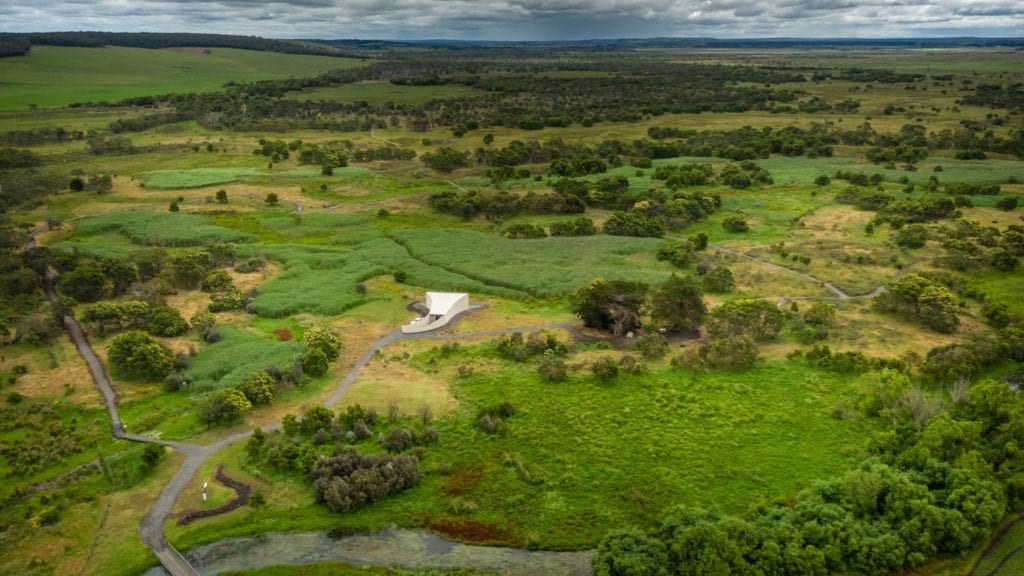
The Aboriginal nation of the Country of the Gunditjmara holds the wondrous natural landmarks of the Budj Bim Volcano and the swamplands of the Kurtonitj component. But that’s not what makes this area of the world a prime UNESCO spot. It is the Aboriginal cultural values and the vast aquaculture network of channels, dams and weirs, made possible by the Budj Bim Lava flows. Located in southwest Australia, the cultural landscape has established Gunditjmara the largest development of this kind in the world. The floodwaters create basins to trap, store and harvest kooyang eel, which for six millennia has given the local population an economic and social base.
Churches of the Pskov School of Architecture, Russia

This UNESCO site celebrates the architecture of the historic city of Pskov, located in northwest Russia on the banks of the Velikaya River. Wonderful buildings such as cathedrals, churches, monasteries and fortification towers make up the site. Produced by the School of Architecture, features include domes, porches and belfries dating back to the 12th century. The religious buildings are integrated throughout the town, through gardens, fences and perimeter walls. Hundreds of years old, the school has formed the evolution of Russian architecture for over five centuries.
Dilmun Burial Mounds, Bahrain

What is a UNESCO site without a fascinating archaeological burial site? These are located on the western side of the island of Bahrain, and are comprised of over 21 sites built between 2050 and 1750 BCE. Six of them are burial mound fields with a few dozen to several thousand tumuli. All told, there are 11,774 burial mounds which were originally in the form of cylindrical low towers. Other sites include 17 royal mound sepulchral towers, two storeys tall. They are evidence of the Early Dilmun civilization around the 2nd century BCE, and show the unique characteristics and scale of these burial chambers.
Erzgebirge/Krušnohoří Mining Region, Czechia, Germany
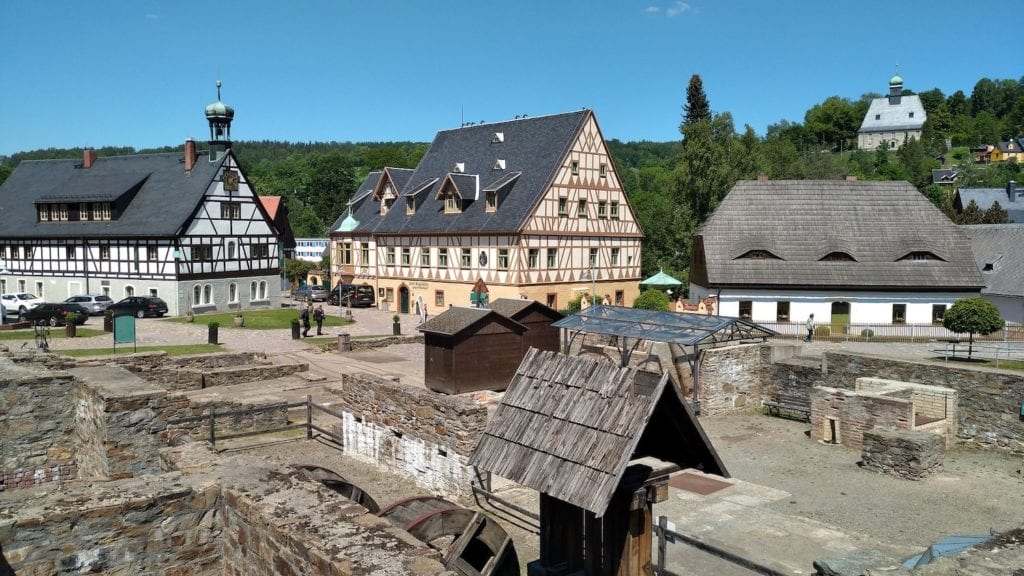
These mountains span the Saxony region in south-eastern Germany and north-western Czechia, containing a wealth of metals exploited through mining starting from the Middle Ages. What makes this site special is the sheer magnitude of its place in mining history. It was the most important source of silver ore in Europe from 1460 to 1560, triggering many technological innovations. Towards the end of the 19th century, it was a major global producer of uranium. Almost 800 years of continual mining has shaped this cultural landscape.
Historic Centre of Sheki with the Khan’s Palace, Azerbeijan
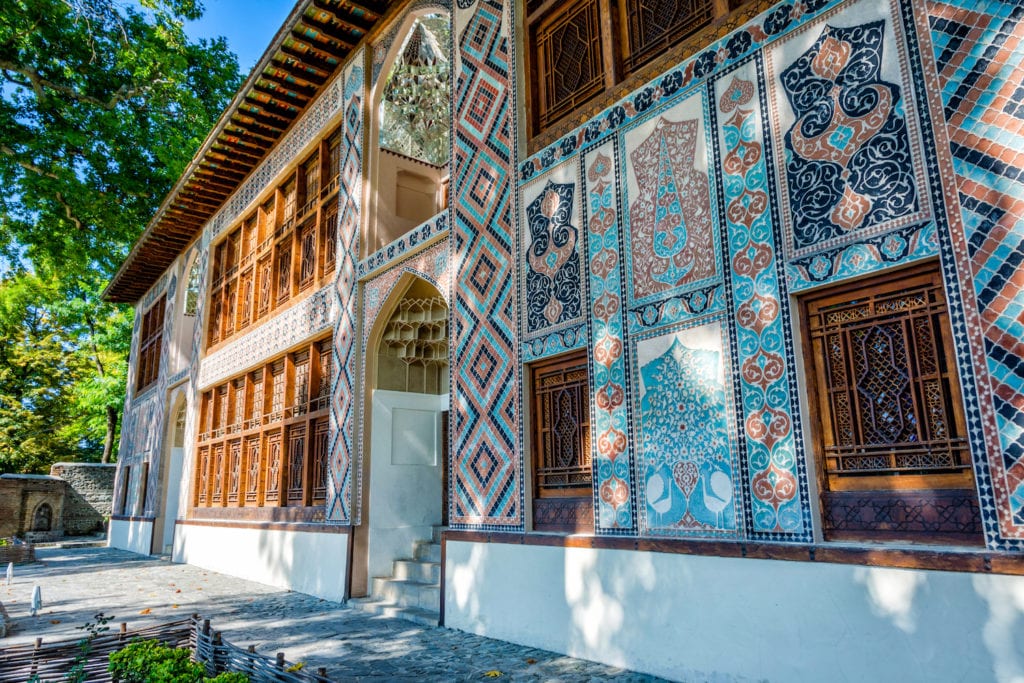
Sheki is about a 4.5-hour drive to the coastal city of Baku, located inland at the foot of the Greater Caucasus Mountains. The northern part of the city is built on the mountain, with the southern part extending into the river valley. The historic city centre was rebuilt in the 18th century after devastating mudflows, and is characterized by a traditional ensemble of houses with gabled roofs. Sheki sits along important historic silkworm trade routes, and its architecture is influenced by Safavid, Qadjar and Russian building traditions.
Jaipur City, Rajasthan, India

A 4-hour drive southwest of New Delhi will take you to this fascinating city of Jaipur, founded in 1727 by Sawai Jai Singh II. Its streets feature continuous colonnaded businesses that intersect in the center, with large public squares called chaupars. The urban planning was taken from Hindu, modern Mughal and Western cultures. It is a curious mixture of the grid plans of the West, while maintaining the organization districts indicative of Hindu concepts. Jaipur maintains its original commercial, artisanal and cooperative traditions even today.
Jodrell Bank Observatory, United Kingdom

In rural northwest England, less than an hour south of Manchester and free from radio interference, is one of the world’s leading radio astronomy observatories. Starting in 1945, the site conducted research on cosmic rays detected by radar echoes, and is still in operation today. It includes radio telescopes and has had a significant scientific impact on the study of meteors and the moon. The observatory had its hand in the discovery of quasars, quantum optics, and the tracking of spacecraft, leading to radical changes in how we understand the universe.
Krzemionki Prehistoric Striped Flint Mining Region, Poland
This is another historic mining site located in the mountain region of Świętokrzyskie. Comprised of four mining sites, it is dedicated to the extraction and processing of flint, which is mainly used for axe making. The underground mining structures feature one of the most prehistoric flint extraction and processing systems to date. Visitors will get information about life and work in these ancient settlements while getting a glimpse of this extinct cultural tradition, a significant contribution of tool production in human history.
Landscape for Breeding and Training of Ceremonial Carriage Horses at Kladruby nad Labem, Czechia
The kladruber horse is a type of draft horse used in ceremonies by the Habsburg imperial court. Just an hour’s drive east of Prague, this breeding ground is situated in the Elbe plain’s Střední Polabí area. The flat, sandy soils include fields, fenced pastures, a forested area and working buildings. In 1579 an imperial stud farm was established and has been ongoing ever since. As one of Europe’s leading horse-breeding centers, it began at a time when horses were vital partners in transport, agriculture, military support and aristocratic representation.
Le Colline del Prosecco di Conegliano e Valdobbiadene, Italy

In the gorgeous vinegrowing landscape of north-eastern Italy, you will find this Prosecco wine production area. A feature of the land is its ‘hogback’ hills, ciglioni (small plots of vines on narrow grassy terraces), forests, small villages and farmland. This would make a great day trip from Venice, just over an hour’s drive south. The use of ciglioni has created an interesting checkerboard landscape of rows of vines, parallel and vertical to the slopes, and has been around since the 17th century. Additionally, the more modern bellusseratechnique of training vines has contributed to the overall aesthetic.
Megalithic Jar Sites in Xienghuang – Plain of Jars, Lao People’s Democratic Republic
Located on a plateau deep in central Laos is the most prominent evidence of the Iron Age civilization. The Plain of Jars is comprised of more than 2,100 tubular-shaped megalithic stone jars dating from 500 BCE to 500 CE. Used for funerary practices, the 15 components are made up of large carved stone jars, stone discs, secondary burials, tombstones, quarries and other funerary objects.
Mozu-Furuichi Kofun Group: Mounded Tombs of Ancient Japan
A total of 49 kofun (Japanese for ‘old mounds’) are burial mounds which are different sizes and can take the form of key holes, scallops, circles or squares. The tombs were for members of the elite from the Kofun period, from the 3rd to 6th century CE. Some of them contain funerary objects, such as weapons, armor and ornaments, and decorated with clay figured representations of everyday objects. Located just south of Osaka, the tombs show the differences in social classes of that period with a highly sophisticated funerary system.
Ombilin Coal Mining Heritage of Sawahlunto, Indonesia
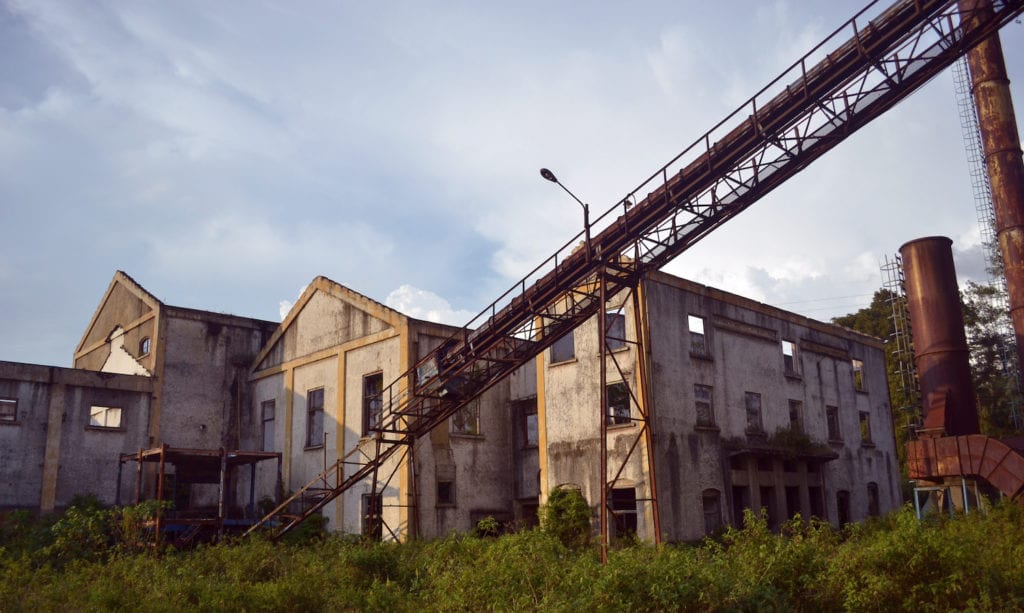
Located about 2.5 hours by car northeast of Padang, this coal mining site was in a once inaccessible area of Indonesia. It was developed by the Netherlands’ colonial government in the late 19th century, as an integrated system that enabled the efficient deep-bore extraction, processing, transport and shipment of coal. The site includes the mining area and company town, coal storage facilities at the port of Emmhaven and the railway network linking the mines to the coast.
Risco Caido and the Sacred Mountains of Gran Canaria Cultural Landscape, Spain
Gran Canaria has cliffs, ravines and volcanic formations in an area of rich biodiversity. Located in a vast mountainous area on an island about 1,600 km off the coast of southern Spain, it includes a large number of troglodyte settlements whose age is proof of the presence of a pre-Hispanic culture on the island. It evolved in isolation from the arrival of North African Berbers, until Spanish settlers arrived in the 15th century. The troglodyte complex includes cult cavities and two sacred temples where seasonal ceremonies were held.
Royal Building of Mafra – Palace, Basilica, Convent, Cerco Garden and Hunting Park, Portugal
Just 30 km northwest of Lisbon you will find a rather imposing quadrangular building, housing the king’s and queen’s palaces, the royal chapel, a Franciscan monastery and a library containing 36,000 volumes. Conceived by King João V in 1711 as a representation of his conception of the monarchy, the complex has a geometric layout. The Royal Mafra building illustrates the power and reach of the Portuguese Empire. João V commissioned works of art that make Mafra an exceptional example of Italian Baroque.
Santuary of Bom Jesus do Monte in Braga, Portugal

A nice day trip an hour’s drive northeast of Porto is a cultural landscape on the slopes of Mount Espinho, overlooking the town of Braga. The sanctuary evokes Christian Jerusalem, recreating a sacred mount crowned with a church. Developed over a period of 600 years, its Baroque style illustrates a European tradition of creating sacred mountains, promoted by the Catholic Church at the Council of Trent in the 16th century. A series of chapels evokes the Passion of Christ, with fountains, allegorical sculptures and formal gardens.
Seowon, Korean Neo-Confucian Academies, Republic of Korea
This site is located in the central and southern parts of Korea’s Republic, and is made up of nine seowon, representing a type of Neo-Confucian academy of the Joseon Dynasty (15th-19th centuries CE). The seowan’s appreciated a nearness to nature, mountain and water sources, as cultivation of mind and body. This is evident in the design of the pavilion-style buildings, intended to create connections to the landscape. The seowons are part of a historical process where Neo-Confucianism from China was adapted to Korean conditions.
The 20th-Century Architecture of Frank Lloyd Wright, U.S.A

Mr. Wright is recognized as one of the premier architects of his time, with many of his creations peppered throughout the U.S. The ones recognized by UNESCO include the Fallingwater (Mill Run, PA), the Herbert and Katherine Jacobs House (Madison, WI) and the famous Guggenheim Museum (New York City). They reflect Wright’s organic architecture, which embodies an open floor plan and the blurring of boundaries between exterior and interior, using steel and concrete.
Read: 5 Ways to Eliminate Single-Use Plastic When You Travel
Water Management System of Augsburg, Germany
The small town of Augsburg, less than an hour by car from Munich, has evolved successive phases of a water management system from the 14th century to present day. This system includes an interesting network of canals, water towers, a water-cooled butchers’ hall, a system of three monumental fountains and hydroelectric power stations which continue today to produce sustainable energy. The technological innovations of this water system have made Augsburg a pioneer in hydraulic engineering.
Writing-on-Stone,Áísínai’pi, Canada
Smack dab in the northern Great Plains on the border between the U.S. and Canada (about 2.5 hours by car north of Great Falls, MT), the Milk River valley dominates the topography of this cultural landscape. It features a concentration of pillars or hoodoos, which are columns of rock sculpted by erosion into incredible shapes. The native Blackfoot population left engravings and paintings on the sandstone walls here, bearing testimony to messages from Sacred Beings. These dates back from 1800 BCE to the start of post-contact period, and considered sacred to the Blackfoot people.
Natural properties inscribed to the list
French Austral Lands and Seas, France
Located in the southern Indian Ocean, this is the largest of the rare emerged land masses: the Crozet Archipelago, the Kerguelen Islands, Saint-Paul and Amsterdam islands, and 60 small sub-Antarctic islands. It is an oasis in the Southern Ocean, supporting one of the highest concentration of birds and marine animals on the planet. King Penguins and Yellow-nosed albatrosses rule here. The remoteness of the islands from human activity makes them spectacular showcases of biological evolution.
Hyrcanian Forests, Iran
This is a unique forested massif stretching 850 km along the southern coast of the Caspian Sea. The forest dates back 25 to 50 million years and the floristic biodiversity is stunning: 44% of the vascular plants known in Iran are found in these forests, which covers only 7% of the country. Currently, 180 species of birds typical of temperate forests and 58 mammal species have been recorded, including the elusive and iconic Persian leopard.
Migratory Bird Sanctuaries along the Coast of Yellow Sea-Bohai Gulf of China
An intertidal mudflat system here is considered to be the largest in the world. These, along with marshes and shoals are very productive and are growth areas for many species of fish and crustaceans. These intertidal areas of the Yellow Sea/Gulf of Bohai are of great global significance, due to the large gathering of migratory birds that use the East Asian-Australasian flyway. The bird species include some of the world’s most endangered, and depend on this area as a stopover along the flyway.
Vatnajökull National Park, Iceland
Covering an area of 1,400,000 ha (nearly 14% of Iceland territory) this iconic volcanic region boasts 10 volcanoes, 8 of which are subglacial. Two of them are the most active in the country. The jökulhlaup, which is a sudden flood caused by the breach of the edge of a glacier during a volcanic eruption, is one of the dramatic interactions of ice and land. This recurring phenomenon has led to unique sandur plains, river systems and canyons, and is home to groundwater fauna that has survived the Ice Age.
Mixed properties inscribed to the list
Paraty and Ilha Grande, Brazil
This cultural landscape sits between the Serra da Bocaina mountain range and the Atlantic Ocean. The historical centre of Paraty is one of Brazil’s best-preserved coastal towns. There are also four protected natural areas of the Brazilian Atlantic Forest, a key biodiversity hotspot. Paraty is home to the threatened jaguar, the white-lipped peccary, and the woolly spider monkey. The historic town has retained its 18th century plan and much of its colonial architecture.
Boundary expansion made to the list
Natural and Cultural Heritage of the Ohrid Region, Albania, North Macedonia
First inscribed on the World Heritage list in 1979, this region’s boundaries have been extended. The site’s extension now includes the northwestern Albanian part of Lake Ohrid, the Lin Peninsula and the strip of land along the shoreline that connects the peninsula to the Macedonian border. New features include an Early Christian church founded in the middle of the 8th century and three sites showing the presence of prehistoric pile dwellings. Flora and fauna dating back to the Tertiary period are found by the lake.





